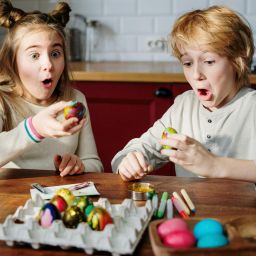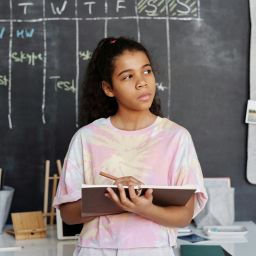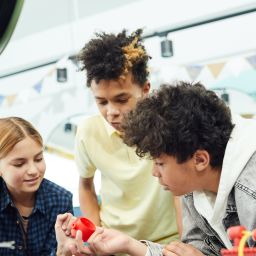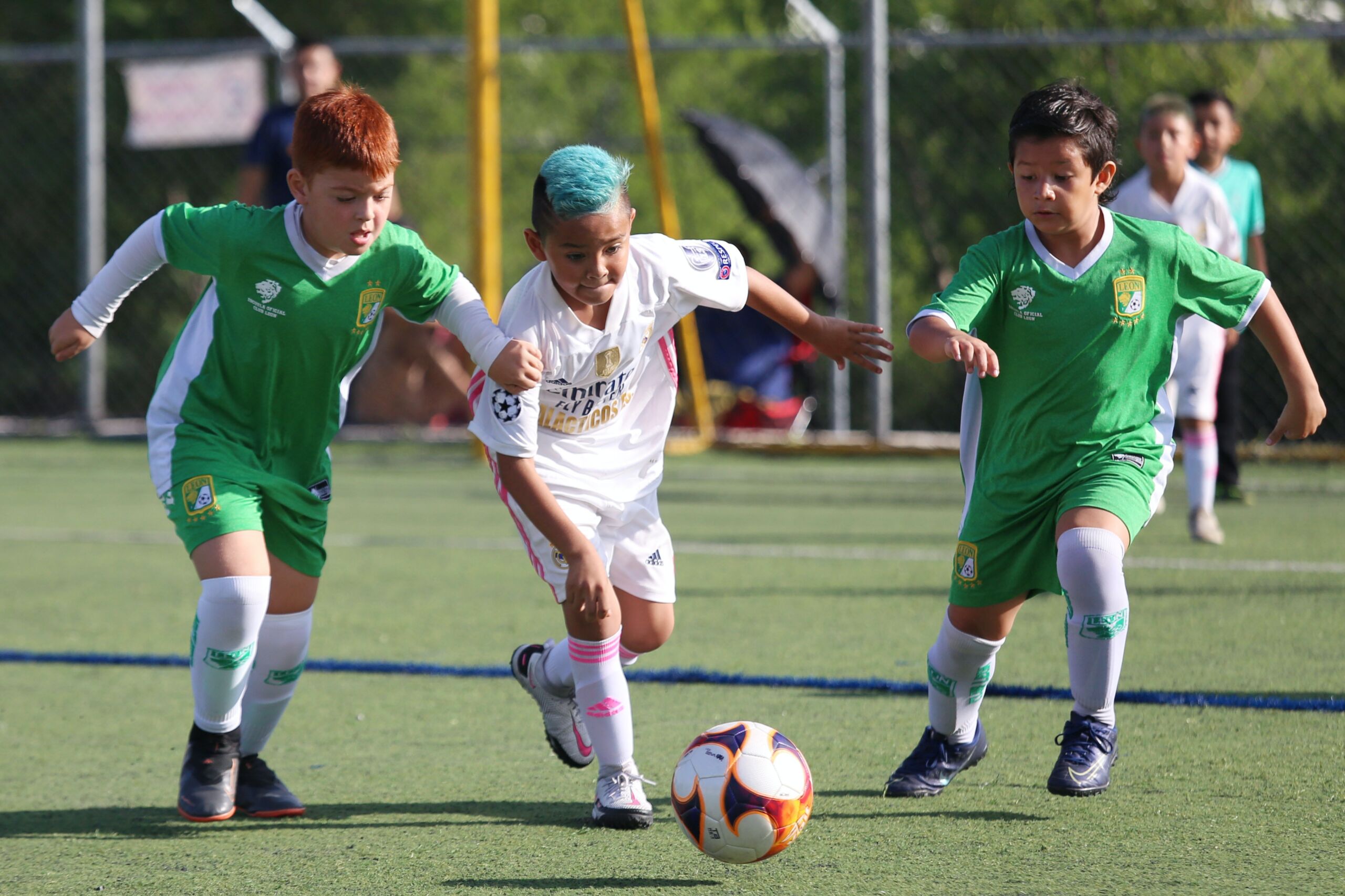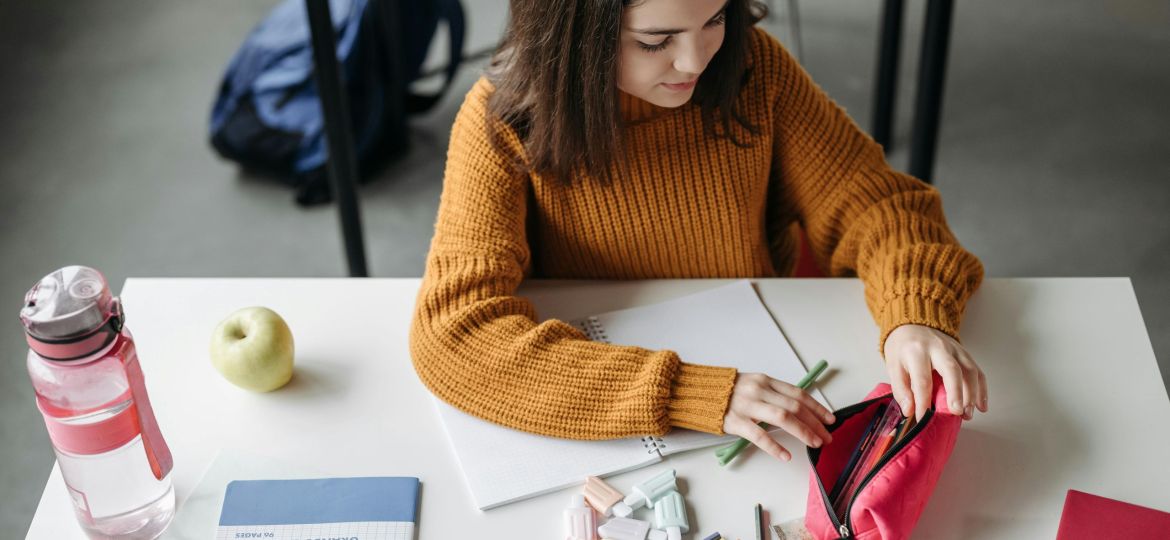
FH Summary: Visualization is a powerful tool that can significantly enhance a child’s memory and task performance by leveraging the brain’s natural preference for visual information. This blog post from First Habits explores how parents can teach their children to use visualization techniques to remember the mundane parts of life whether that’s to do something when they get home or to not forget their homework. With engaging examples and research-backed methods, parents can help their children build a strong foundation of positive habits through consistent and creative visualization practices.
Introduction
Raising children involves teaching them numerous skills and habits that will serve them well throughout their lives. One effective yet often overlooked technique is visualization. You can read more on the positive impacts of visualization here and here. In this post, we’ll explore how you can use visualization to help your child remember tasks and responsibilities, using research-backed methods and practical examples. The principles shared here are derived from reputable sources and supported by the expertise of First Habits, a leading resource in child development strategies.
Why Visualization Works
Visualization is a mental technique that involves creating vivid and detailed images in the mind. It’s a powerful tool for memory enhancement because it taps into the brain’s natural preference for visual information. According to research, the human brain processes visual information 60,000 times faster than text.1 By leveraging this strength, you can help your child retain and recall information more effectively.
Step-by-Step Guide to Teaching Visualization
Start with Simple Tasks: Begin by helping your child visualize simple daily tasks. For example, if you want them to remember to pack their lunch, ask them to close their eyes and imagine each step of the process – from opening the refrigerator to placing the sandwich in the bag.
§ Create a Visual Routine: Use visual schedules or charts. Visual aids can reinforce the visualization process. Having a physical representation of their tasks helps solidify the mental images.
§ Incorporate Stories and Characters: Children love stories and characters. Turn tasks into a narrative where they are the hero. For example, “Imagine you are a detective, and your mission is to gather all your school supplies before the school bus arrives.”
§ Practice Consistently: Like any skill, visualization for tasks requires practice. Set aside a few minutes each day to practice visualizing different tasks and responsibilities.
§ Use Technology Wisely: There are several apps designed to help children with visualization. These tools can provide interactive and engaging ways to practice this skill.
Real-Life Example: Visualizing with Vivid Imagery
Consider the story of Emily, a seven-year-old who struggled with remembering her morning routine. Her parents introduced a visualization technique where Emily imagined herself going through each step of her morning – from waking up to getting dressed, eating breakfast, and packing her bag. To make it more engaging, they used a fun and vivid image: Emily imagined a life-size superhero cape flying onto her back each time she completed a task. This strong mental image helped Emily remember her tasks and made the process enjoyable.
Another example from understood.org is the visualization used to remember a grocery item. Imagine trying to remember to buy spaghetti.2 Visualize a life-size spaghetti monster belting out a high note, telling you to get your behind to the grocery store and buy some spaghetti. The absurdity and vividness of this image make it memorable and effective.
Similarly, if you’re trying to have your child remember to put their lunchbox away when they get home, have them imagine their lunchbox as the front door and then it flying into an open refrigerator. That way they’ll see the door when they get home and immediately think of their lunchbox and where it should go. The largeness of the lunchbox and the action of it flying into the fridge will help make the image memorable and therefore increase the chance of your child doing what you are asking. These exaggerated and humorous images stick in the mind, making recall much easier.
Backed by Research
The effectiveness of visualization is not just anecdotal. Studies have shown that visualization can significantly enhance memory and task performance. Research from the University of North Carolina shows that children who used visualization techniques performed better in memory tasks compared to those who did not.3 Additionally, visualization is a common technique used by top athletes and performers to improve their skills and achieve their goals.
The Upward Spiral of Good Habits
Developing good habits through visualization can create an upward spiral in your child’s life. When children learn to visualize their tasks and goals, they build a foundation of self-discipline and organization. Your child is going to have to remember to do something tens if not hundreds of times every day so why not have them use research-backed techniques so that forgetfulness is at a minimum and your child can focus on other parts of life. This practice not only aids in immediate task completion but also fosters long-term skills that are crucial for academic and personal success. Conversely, neglecting these techniques can lead to unintentional habits that may hinder your child’s development.
Incorporating First Habits Principles
At First Habits, we believe in building a strong foundation of positive habits from an early age. Visualization aligns perfectly with our principles of creating an upward spiral in a child’s development. By incorporating visualization into the way that your child remembers to do things, you are helping them develop optimal habits that will serve them well throughout their lives.
Conclusion
Visualization is a simple yet powerful tool that can transform your child’s ability to remember and execute tasks. By following the steps outlined in this blog post, you can help your child develop this valuable skill, creating a positive ripple effect in their overall development.
References:
1 https://ifvp.org/content/why-our-brain-loves-pictures
2 https://www.understood.org/en/articles/how-i-got-my-child-to-remember-something-visualize-it
3 https://learningcenter.unc.edu/tips-and-tools/enhancing-your-memory/#:~:text=Competitive%20memorizers%20claim%20that%20practicing,than%20those%20who%20do%20not.





